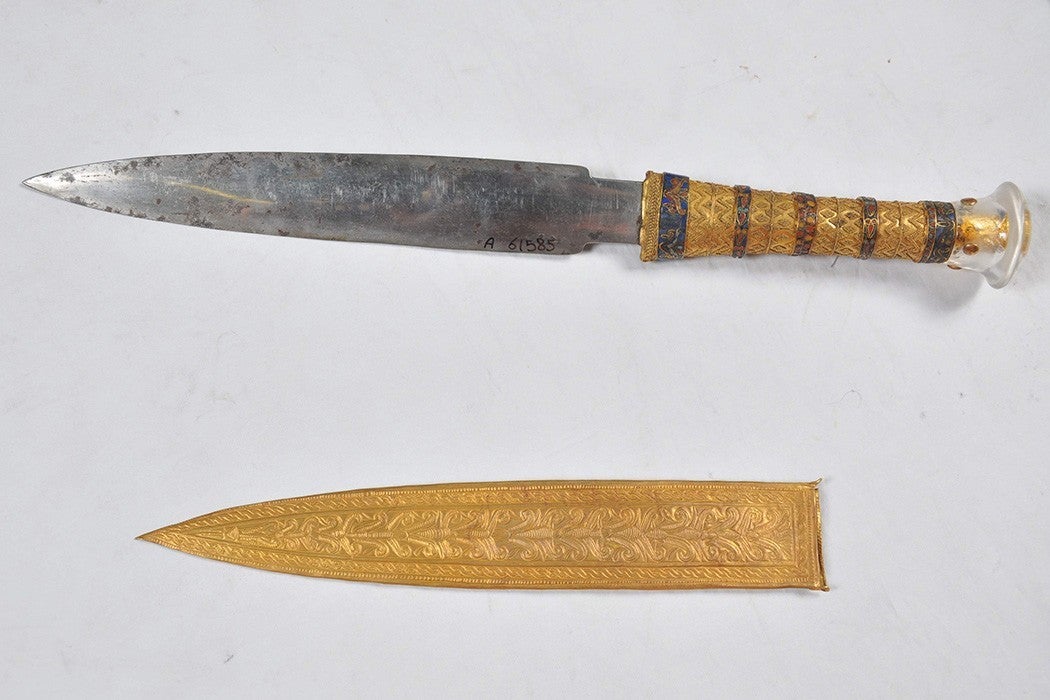What do you get the boy pharaoh who has everything? A dagger made out of meteorite iron, apparently. Recent analysis of an iron dagger discovered by Howard Carter in wrappings surrounding Tutankhamun (aka King Tut) suggests an extraterrestrial origin for the blade. Meteorites are uncommon, and iron meteorites are particularly rare, so clearly, the ornate knife was a high status item.
Of course, Tut wasn’t the first to have a sky-knife in his arsenal. Here on Earth, iron is difficult to come by. Ore must be mined and refined, and smelting technology took centuries to develop. But meteorites provide lumps of readymade iron. Reports abound of meteorite-iron weapons. Fragments of meteorite iron knives have been found in such far-flung places as Ur, in Mesopotamia. A set of beads from early Egypt also seem to have been made of meteorite iron. Spanish soldiers report Aztec warriors brandishing iron weapons, although the Aztecs were not known to possess metal working technology. The Aztecs pointed to the sky as the source of the metal.
The problem with meteorite iron is that it has a high nickel content, which makes it extremely dense, heavy, and difficult to work with. One reported cutting attempt required 10 hours to slice through a 5 inch meteorite. Ancient peoples sometimes solved this problem by embedding flakes of meteorite iron into a blade made of another material, such as wood or horn. The flakes could then be chipped off a meteorite using hammers and a lot of sweat.
Possibly inspired by the metal’s hardness and density compared to earthly iron, legends of meteorite iron blades with magical cutting ability abound. A legend from Egypt mentions a “thunderbolt” blade that could cut a horse and rider in two; indeed, “thunderbolt” is a possible translation of meteor. One can see why King Tut simply had to have his own.







